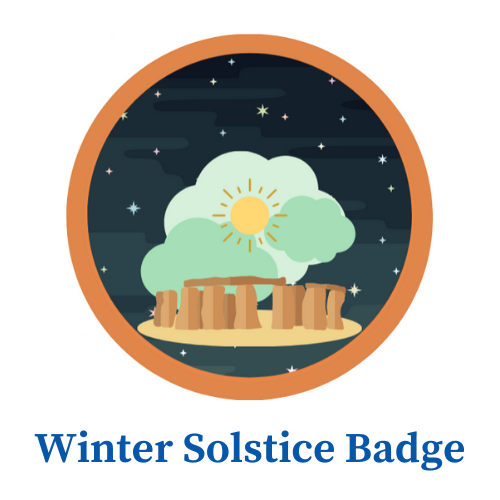
The Winter Solstice is upon us for 2020! For the Northern Hemisphere this year it will land on December 21st and it has some special surprises in store! Why is the Winter Solstice the 1st day of winter? Why is it the shortest day of the year? What is the history of the Winter Solstice? These are all excellent questions that you will have to answer to be able to complete this badge!
Learn about ancient stone structures, traditions and festivals that still persist today, and amazing astronomical events that only occur every 400 years! Complete an activity from each section to earn your badge!
Section 1:
Watch PBS Nature Cat– For grades K-3 watch PBS Nature Cat available on youtube
Watch National Geographic Video- For grades 3-5 watch short video from National Geographic about solstices
Section 2:
Paper Lantern: Learn about the Paper Lantern Festivals that are associated with the Winter Solstice and then make your own paper festival from any paper you have, scissors, and glue/tape/staples
Stonehenge: There are many structures all over the world that no body knows that they were used for, and it’s possible that we never will, however, one theory about Stonehenge is that it was a celestial calendar. Learn more at National Geographic Kids and then try and make your own Stonehenge from cards, rocks or sticks in your yard, or anything from your recycling can! See if you can accomplish this nearly impossible task on a much smaller scale!
Section 3:
Get Outside! Go outside on the “shortest” day of the year. This year is a very special year where on the night of December 21st, 2020 if you look up at the sky you will see an astronomy marvel called “The Great Conjunction.” Jupiter and Saturn will be closer together than they have been since the year 1623 when Galileo was gazing at the stars! Follow this NASA link to find out where you need to look in the night sky to see them and if you are lucky enough to have binoculars or a telescope, make sure to take it out on the night of the 21st!


